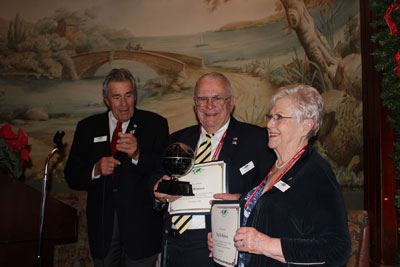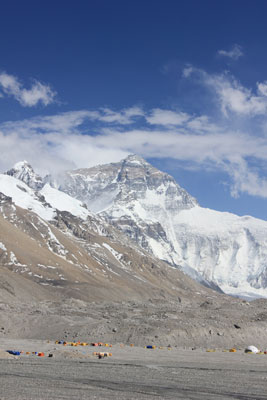Remembrances and recommendations from 50 years of travel around the world
This article appears on page 44 of the April 2015 issue.
324. That’s the number of countries, territories and unique destinations that the Travelers’ Century Club, with over 2,000 members and headquartered in Southern California, recognizes. My wife, Phyllis, and I started in 1965 to “hit ’em all.” After raising three fine sons, getting them all through college and still pursuing an extensive career in the international telecommunications industry, we’ve finally made it.
Venturing into the unknown
We have truly been blessed by our exposure to the many vastly different cultures of our world, its people, its beautiful flora and fauna, its extreme topography and its exotic foods and festivals. We have met and made many, many friends over those wonderful years and now send over 200 Christmas and other greeting cards per year to our friends in the far reaches of our extensive travels.
How many have even heard of such places as Yap, Ogasawara, St. Eustatius or Tristan da Cunha? How about Mariehamn, Srpska, Umm al-Quwain, Abkhazia or Lakshadweep?
When we started our journey, we weren’t familiar with them either. If you have trouble finding them in the “National Geographic Atlas of the World,” you can imagine the difficulties we’ve had trying to “get there.”
We have certainly spent a lot of time planning, plotting, scheduling and rendezvousing with transportation to get us to our intended destinations. We always try to allow plenty of time in each location to “put boots on the ground” in order to absorb the culture of the country.
Along our way, we have visited such well-known sites as Auschwitz, Diamond Head, the Egyptian pyramids, the Great Wall of China, Iguassu Falls, the Panama Canal, Mt. Everest, the Acropolis, the Taj Mahal and the Trevi Fountain. We have paid cab fare in pesos, pounds, euros, dinars, shekels, ringgits, kronas and liras.
The best and the worst
An aggressive, informed traveler focuses on many issues in his planning process. Timely connections can be affected by weather, language barriers, time zone differences and the physical distances that must be traveled.
As we have shared our varied experiences with friends, a series of questions inevitably arises. Here are a few of them.
What is your favorite city? This is a tough one, but we’ve settled on Hong Kong. The reason is we were most comfortable there, a place where we lived and worked for almost two years in the late 1990s. We loved the warmness of the people. They respected the work we were doing (bringing them the Internet), and they were hard workers, going home from their jobs each day only when we “turned out the lights.”
The city-state of Hong Kong is beautiful, with its vast number of high-rise residential neighborhoods, the energetic bustle of the Central Business District and the panorama of Victoria Harbour and the Pacific Ocean. In addition, we have many friends there, so we go back every chance we get. There are always new things to see, and its dynamism continues.
What is our least favorite city? We would have to say Tubruq, in the northeastern corner of Libya. We arrived under the cover of darkness, and we had to pay crazy prices for food, diesel fuel and safe passage. Luckily, we avoided putting ourselves in direct danger, though a car bomb went off as we left the city and headed back toward the border with Egypt.
I would love to revisit this battle-scarred city one day, as I am a WWII buff and want to see where the great tank battle was fought between the German General Rommel and the Australian General Morshead.
Our favorite country (other than the USA) is Australia, where the spaces are wide open to the vast variety of people living there. From the Outback population of Aboriginals to the sun-loving blokes of Bondi Beach, Australians are hardworking, fun loving and friendly, and they adore their beer and food.
Like the USA has a gas station on every corner, Australia has a McDonald’s (or Macca’s, as the Aussies call them). (The number of McDonald’s restaurants per capita in Australia ranks among the highest in the world.)
Another of our least favorite countries would have to be Central African Republic (CAR), primarily because it was so incredibly inaccessible during the time of our visit. There was only one small, grassy airfield in what is now the capital, Bangui, and we entered on the heels of the rainy season, so the roads and streams were impassible (except by powered boats and strong animals).
Nevertheless, we enjoyed what food we could get, especially the fufu (pounded cassava), which we saw served with grasshoppers, cicadas and caterpillars, foutou (pounded plantains) and bush meat (we didn't ask what, exactly, was being served). They do grow maize and peanuts, and the yam is native to CAR, but all were out of season when we were there.
The home stretch
In pursuit of our last four countries, in 2014 we visited Cuba, Yemen, North Korea and Libya, making it to our goal of 324. This pursuit may cause the reader to think we were just traveling “to make the numbers” (there are some of our friends who have alleged that), but it is not true. Phyllis and I are genuinely interested in the social and political issues as well as the cultures of the many destinations we have visited. Travel is what the traveler makes it.
My mother always said, “Bobby Henson, you are the only kid I know who comes in the front door going out the back.” Little did she or I expect that I would keep it up, even at 79 years of age.
So where do Phyllis and I go from here? The simple answer is “back to the places we enjoyed the most,” i.e., Mt. Everest and the Amazon, with more time in Myanmar, Mongolia and Central Asia, plus areas that we missed in some of the 324 destinations we’ve visited, including the west coast of Norway and the route from Moscow to Vladivostok on the Orient-Express.
With good planning, good friends and stiff budget control, you, too, can go for all 324. Good luck!



